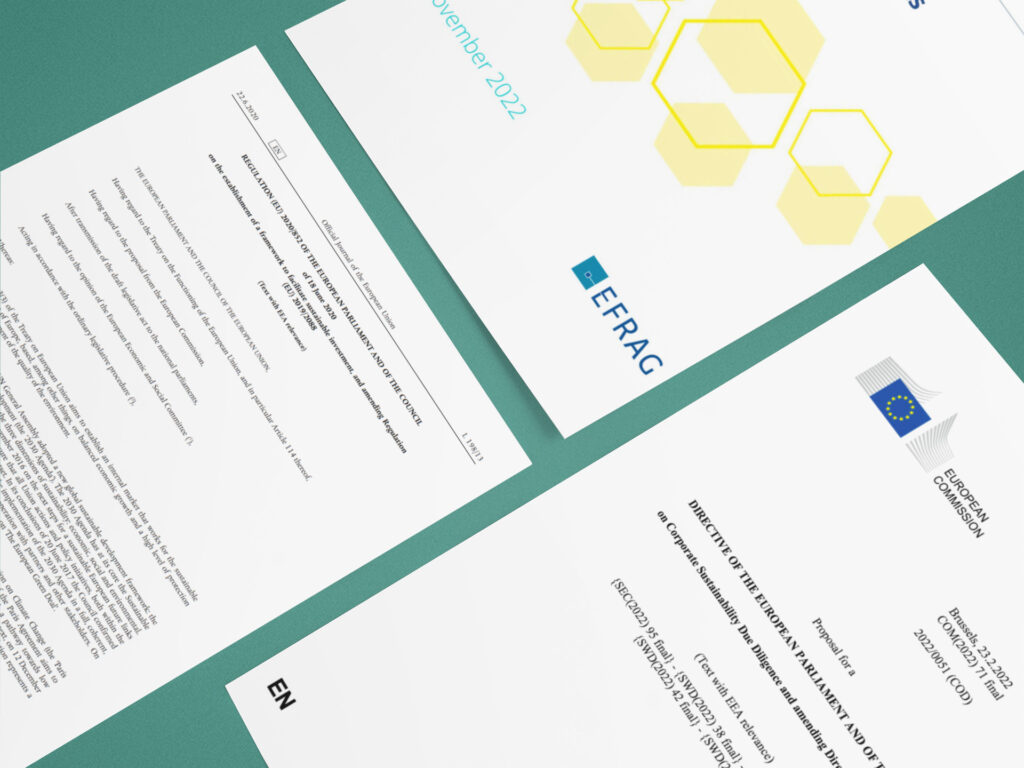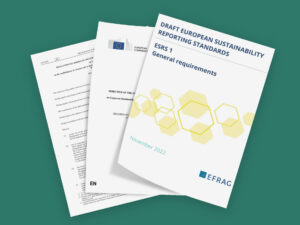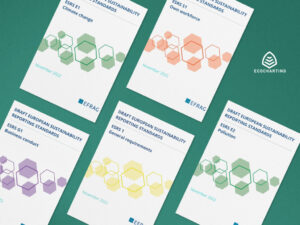On Thursday, June 1, 2023, the European Parliament approved the Corporate Sustainability Due Diligence Directive (CSDDD). The new legislation requires organizations to assess and, if necessary, mitigate their impact on the environment and human rights. The legislation is part of a package of new guidelines that will affect companies in the near future. As it is easy to lose track of the various abbreviations, we provide an overview of the three most important new frameworks. And: what does this mean for your organization?
With the introduction of the EU Green Deal, the requirements for sustainability in businesses have accelerated. Even organizations that have been leaders in sustainable business practices so far will need to take significant steps to comply with the new laws. The three most important changes are the introduction of the EU Taxonomy, the CSRD, and the CSDDD.
At first glance, the three components may seem to have a lot of overlap. Upon closer inspection, it becomes clear that there are indeed many connections between the three guidelines. But what does the landscape actually look like?
EU Taxonomy
Let’s start with the EU Taxonomy. This framework aims to guide the EU towards a climate-neutral economy by 2050. To achieve this, the EU wants to facilitate investors and financiers in making “green” investments. To accomplish this, the EU Taxonomy provides a classification system that identifies activities considered as “green” by the EU. Companies are expected to assess whether they engage in activities that align with the taxonomy.
[text continues below the image]

Corporate Sustainability Reporting Directive
As the name suggests, the Corporate Sustainability Reporting Directive (CSRD) outlines how organizations should report on sustainability. Remarkably, the guidelines accompanying the CSRD are the most extensive reporting requirements in this field to date. The number of topics that may need to be reported on is extensive (almost 100). The aim of the new legislation is to make sustainability reporting among companies more reliable, easier to compare, and more transparent. To determine which of the 100 topics to report on, organizations need to assess their impacts (positive and negative) to identify the so-called material topics.
Part of the CSRD includes the obligation to include the necessary information related to the EU Taxonomy in your sustainability report. Therefore, analyzing the EU Taxonomy is part of your preparations for the CSRD.
One notable aspect of the CSRD is that it does not impose requirements on the sustainability improvements an organization must make. You are free to set your own goals and determine the steps to improve sustainability. The CSRD only outlines the prerequisites for the mandatory reporting that large organizations will undertake in the field of sustainability.
Sustainability Due Dilligence
Now let’s discuss the recently adopted legislation: the Corporate Sustainability Due Diligence Directive (CSDDD). Unlike the CSRD, the CSDDD does impose requirements regarding improvements that organizations must make concerning their impacts on the environment and human rights. The CSDDD mandates that companies assess their negative impacts in these two areas and take necessary measures to prevent or mitigate them.
De relatie tussen CSDDD, CSRD en EU Taxonomie
There are clear connections between the three pieces of legislation, and you can leverage these connections in your preparations.
The CSRD can be seen as the overarching framework. In your preparation for CSRD reporting, you will also take steps to comply with the CSDDD and the EU Taxonomy. Here’s how it works: To determine the topics to report on for the CSRD, you conduct a double materiality analysis, which involves mapping your activities and impacts. This presents an opportunity to address both the alignment of activities with the EU Taxonomy and the assessment of impacts for the CSDDD.
Conducting a double materiality analysis can be quite challenging. That’s why we offer software that is fully aligned with the guidelines and designed in collaboration with sustainability experts and accountants. Request a demo below to see how it can assist you in your preparations.
Begin vandaag nog met voorbereiden op de CSRD.
Krijg een persoonlijke tour in onze intuītieve CSRD software. Vraag direct een demo aan.



